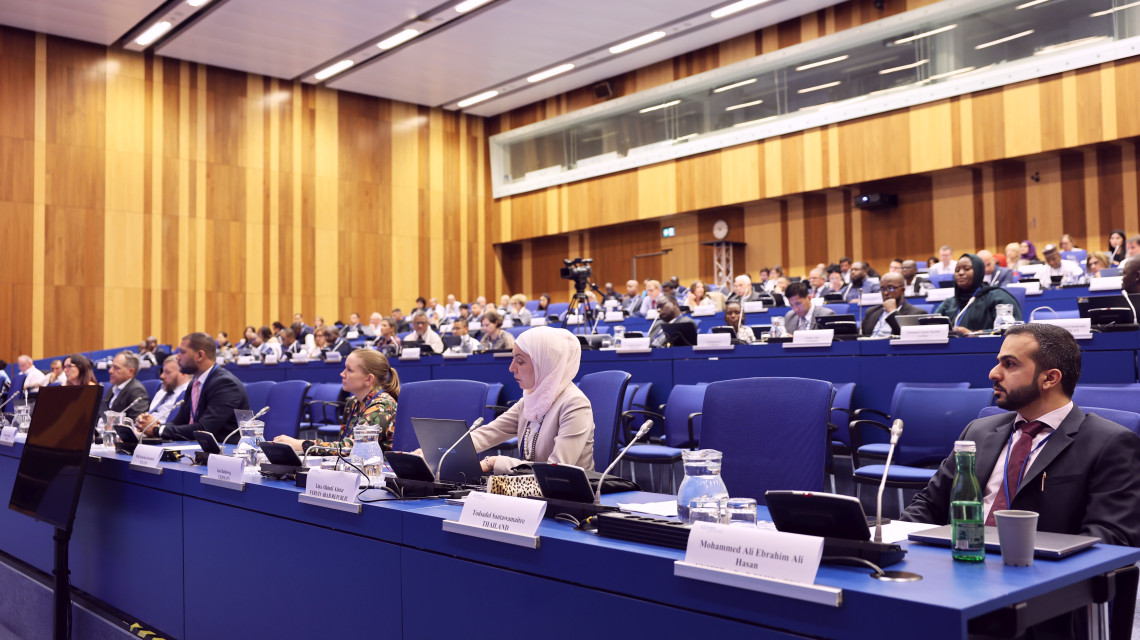Radioactive sources are important in cancer treatment and gamma radiography devices in industry and keeping them safe and secure is essential - from manufacture to disposal. The IAEA's Guidance on the Management of Disused Radioactive Sources helps countries safely and securely manage disused radioactive sources by outlining options to reuse, recycling, store, dispose of or return them to suppliers.
Earlier this month, 151 legal and technical experts from 112 countries and several international organizations met in person for the first time since the Guidance was published in 2018 to discuss their experiences, challenges and lessons learned from its implementation. The guidelines supplement the IAEA's Code of Conduct on the Safety and Security of Radioactive Sources, and has received commitment from 75 countries.
"The highest standards of safety and security should be upheld to protect people and the environment from potential harm or misuse throughout the lifecycle of a radioactive source. The goal is to avert accidental radiation exposure and prevent criminal or intentional unauthorized acts involving or directed at radioactive sources," said Elena Buglova, Director of the IAEA' s Division of Nuclear Security, in her opening remarks. "We witness a growing support to international instruments, including the Code of Conduct on the Safety and Security of Radioactive Sources and its supplementary Guidance," she added.
Ghana is the latest country to express political commitment to the Guidance on the Management of Disused Radioactive Sources. Augustine Faanu, Deputy Director General of Ghana's Nuclear Regulatory Authority, said, "Ghana has made strides towards establishing a sound regulatory regime and has adopted the 'cradle to grave' approach in the management of disused radioactive sources". "The country hopes to derive maximum benefit from the Guidance by taking all the necessary steps to establish relevant regulations, policy and strategy to facilitate the availability of the needed resources for the safe, secure and sustainable management of disused sources," he added.
The establishment of a national policy and strategy for managing disused radioactive sources is a fundamental part of the Guidance. A description of the technical options available, aligned with the policy and strategy, an outline of responsibilities for all involved, as well as advice on the management of orphan sources and the international and regional cooperation are also among the Guidance contents.
Several countries shared their national experiences during the meeting, including insights into their legal and regulatory frameworks, challenges related to the available workforce and new technologies, and region-specific considerations. The important role and range of stakeholders involved - from suppliers to transport companies and government authorities - was also raised, highlighting the need for engagement throughout the process.

More than 150 participants from IAEA Member States attended the first in person meeting since the publication of the Guidance on the Management of Disused Radioactive Sources in 2018. (Photo: C. Villarreal Silva/IAEA)
Cristina A. Dominguez, Chair of the meeting and Head of the Legal Department at the Argentinean Nuclear Regulatory Authority, emphasized the positive momentum. "There are ongoing challenges, such as developing robust policies, securing financial provisions, and establishing long term storage solutions, but there is also clear commitment among countries to advance these areas," she said, adding that "continued international cooperation, the exchange of best practices, and active involvement of all stakeholders, including industry, are essential."
During the meeting, the IAEA presented the results of a global survey on the Guidance implementation. While significant differences between regions were identified in terms of implementing the Guidance, especially about policy and strategy, the decision-making process for characterizing disused radioactive sources as waste and the development of a national disposal programme for disused radioactive sources were highlighted as common challenges for many countries.
"The survey results, validated in meeting discussions, highlight both areas of implementation success and challenges at the global and regional level," said Hildegarde Vandenhove, Director of the IAEA' s Division of Radiation, Transport and Waste Safety. "We heard numerous examples of how the Code of Conduct and the Guidance play a crucial role in assisting national efforts to manage radioactive sources throughout their lifecycle, confirming the importance of sustainable implementation of both the Code of Conduct and Guidance," she added.
Code of Conduct and Supplementary Guidance
The Code of Conduct on the Safety and Security of Radioactive Sources is an international legally non-binding instrument, which has received political commitment from 153 countries. It sets the principles and objectives for the safety and security of radioactive sources, encouraging countries to take the appropriate measures necessary to ensure that the radioactive sources within their territory or under their jurisdiction or control are safely managed and securely protected during, and at the end, of their useful lives.
The Guidance on the Management of Disused Radioactive Sources applies to Category 1 to 3 radioactive sources. The IAEA safety standards categorize radioactive sources into five categories, with Category 1 sources considered the most 'dangerous' because they can pose a very high risk to human health if not managed properly.






